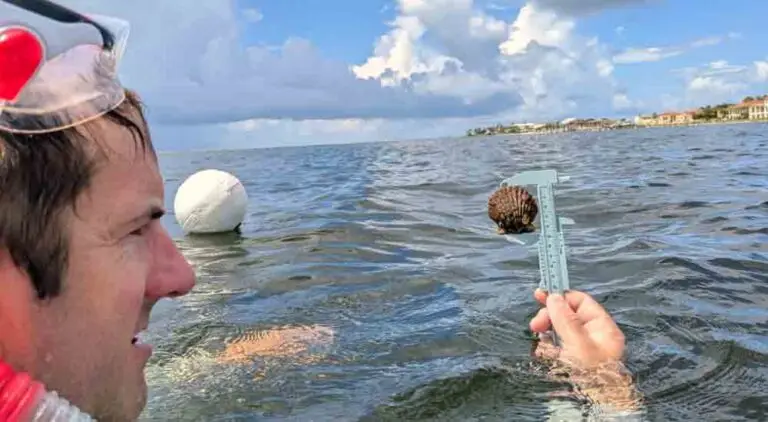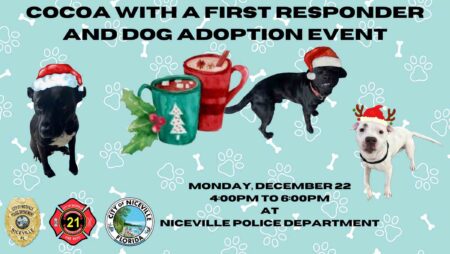PENSACOLA, Fla. — New survey results from the 2024 Pensacola Scallop Search show encouraging signs for the bay scallop population in Big Lagoon, suggesting a potential recovery after decades of decline, according to Florida Sea Grant.
Florida Sea Grant is a university-based program that supports research, education, and extension to conserve coastal resources and enhance economic opportunities for the people of Florida.
The bay scallop (Argopecten irradians), once abundant in the lower Pensacola Bay system, has significantly declined since the 1970s due to the loss of seagrass beds, declining water quality, and overharvesting, according to the Florida Sea Grant report.
Scalloping, a popular activity in Florida, is now heavily restricted to specific months and regions, mainly the Big Bend area, to protect these vulnerable populations.
In Pensacola Bay, commercial harvesting is banned, and recreational harvesting is not allowed as part of efforts to restore the scallop population.
Since 2015, Florida Sea Grant has coordinated the annual Pensacola Bay Scallop Search, where trained volunteers survey designated grids in Big Lagoon and Santa Rosa Sound. The 2024 survey, reported by Florida Sea Grant, saw a record number of volunteers and an increase in scallop counts, raising hopes for a potential recovery of the local scallop population.
2024 Survey Highlights
This year, 168 volunteers trained by Florida Sea Grant surveyed 15 out of 66 grids (23%) from Big Lagoon State Park to Navarre Beach. According to the report, these volunteers covered 152 transects (15,200m²) and found 133 scallops within the transects, with an additional 50 scallops discovered outside these areas, bringing the total to 183 scallops for 2024.
Big Lagoon Findings:
Volunteers and Coverage: Florida Sea Grant reported that 75 volunteers covered 7 of 11 grids (64%) in Big Lagoon, completing 67 transects over 6,700m².
Scallop Counts: The survey found 101 scallops within the transects and 42 additional scallops outside them, averaging about 3.02 scallops per 200m², according to Florida Sea Grant.
Seagrass and Macroalgae: All three types of seagrass—Thalassia, Halodule, and Syringodium—were present, with coverage ranging from 5% to 100%, according to the report. Macroalgae was observed in 86% of grids but was not abundant, Florida Sea Grant noted.
Predators: Florida Sea Grant reported that blue crabs, conchs, and some sea urchins, known predators of scallops, were noted by the searchers.
Santa Rosa Sound Findings:
Volunteers and Coverage: The report stated that 93 volunteers surveyed 8 of the 55 grids (14%) in Santa Rosa Sound, conducting 85 transects over 8,500m².
Scallop Counts: According to Florida Sea Grant, 32 scallops were found within the transects, with 8 additional scallops located outside, averaging about 0.76 scallops per 200m².
Seagrass and Macroalgae: Seagrass densities ranged from 50% to 100%, and macroalgae was present in 62% of the grids, particularly abundant in the eastern survey areas, according to the report.
Predators: The presence of blue crabs, conchs, and sand dollars was recorded, Florida Sea Grant noted.
Long-Term Trends and Population Classification
The bay scallop populations in Big Lagoon and Santa Rosa Sound have historically been classified as “collapsed” (0-2 scallops/200m²), based on criteria from the Florida Fish and Wildlife Research Institute, according to Florida Sea Grant. However, the 2024 findings in Big Lagoon show an increase to 3.02 scallops per 200m², moving the classification to “vulnerable,” the report stated.
Challenges and Conservation Efforts
The increase in scallop numbers could be due to several factors, including more extensive survey efforts, natural population fluctuations, or the potential of double-counting scallops, according to Florida Sea Grant. Nevertheless, the data and public reports on social media suggest a positive trend for the first time in years, the report noted.
Despite these signs of recovery, Florida Sea Grant emphasizes that the scallop population in Pensacola Bay remains fragile. To prevent further decline, local residents are reminded that harvesting scallops in this area is prohibited.
According to Florida Sea Grant, maintaining high adult scallop densities is essential for successful mass spawning and the long-term restoration of the population.
As the annual Pensacola Scallop Search continues, researchers and volunteers aim to gather more data to better understand the factors influencing scallop populations and support efforts to restore this important species to Pensacola Bay.








